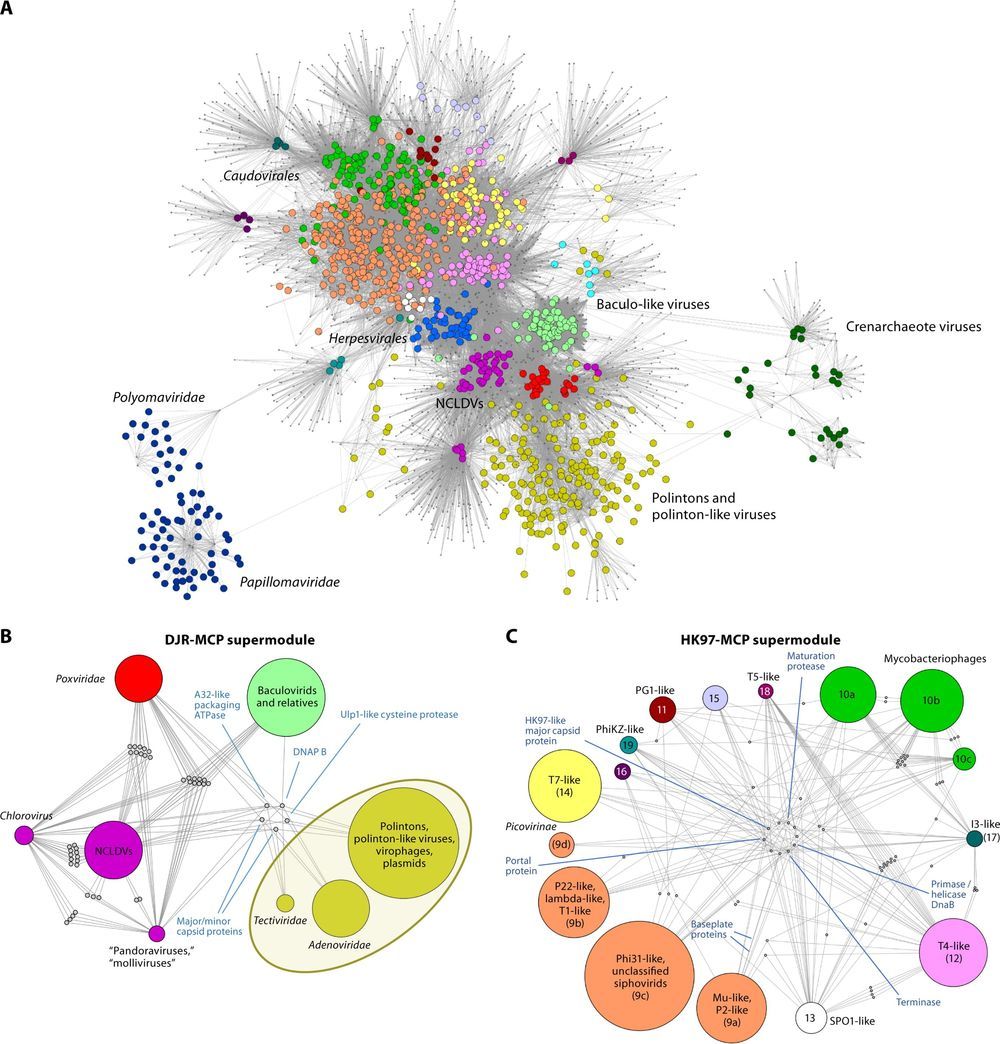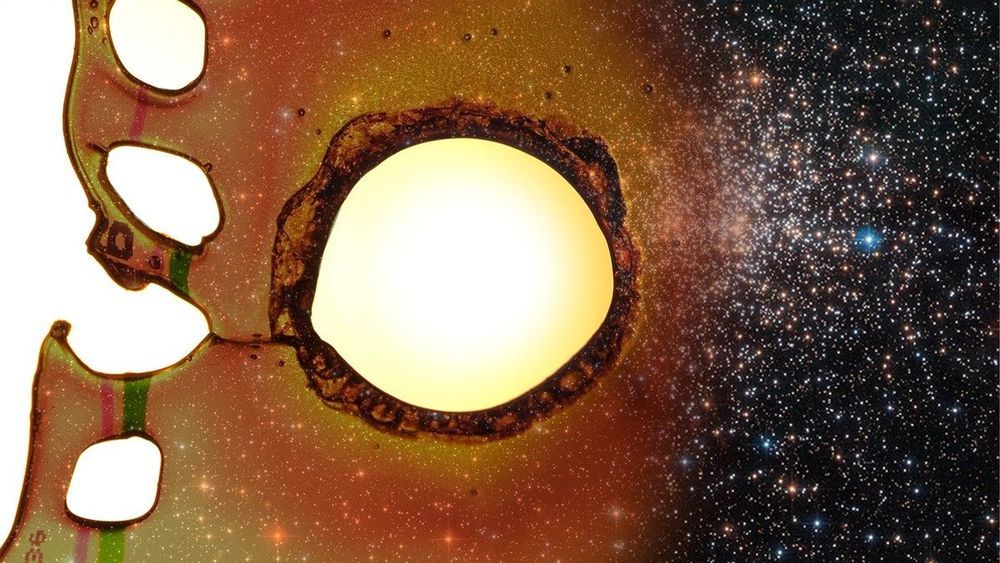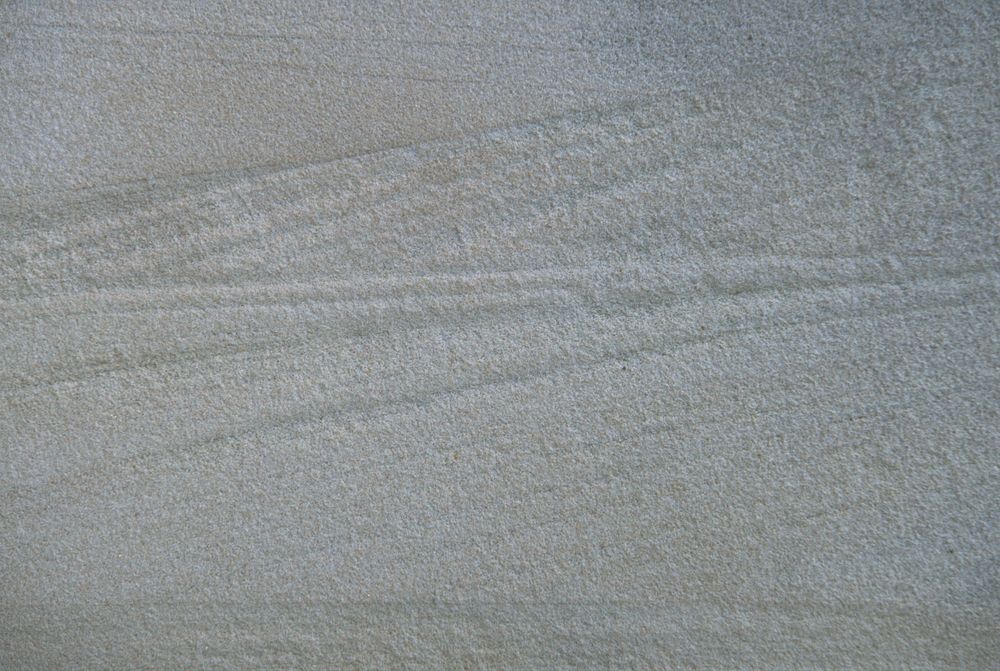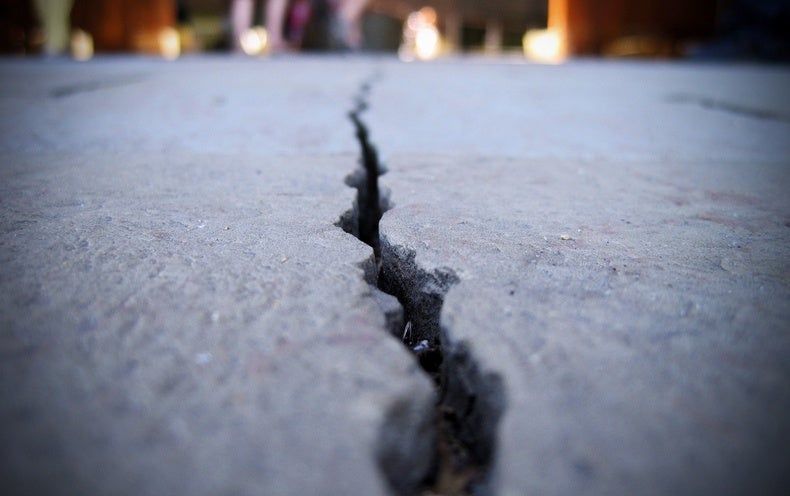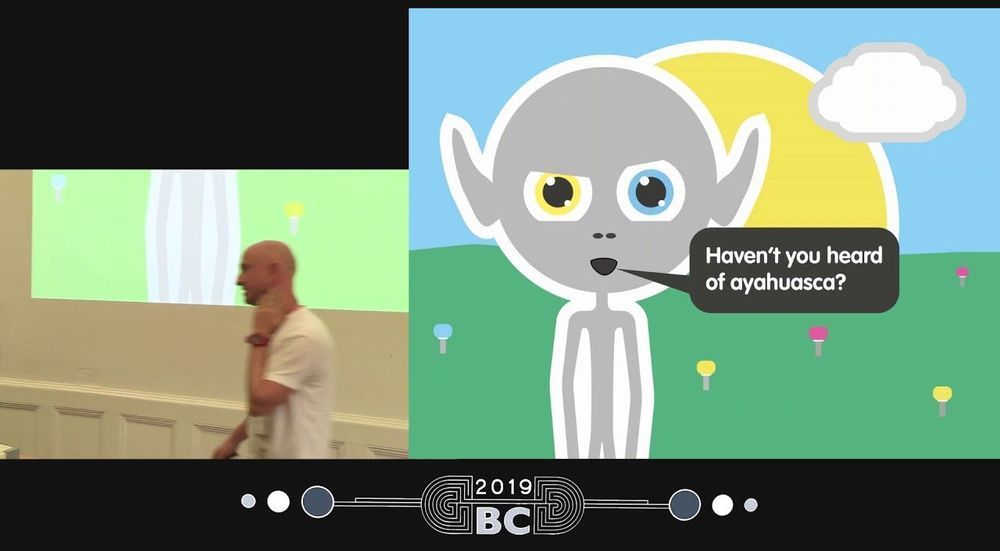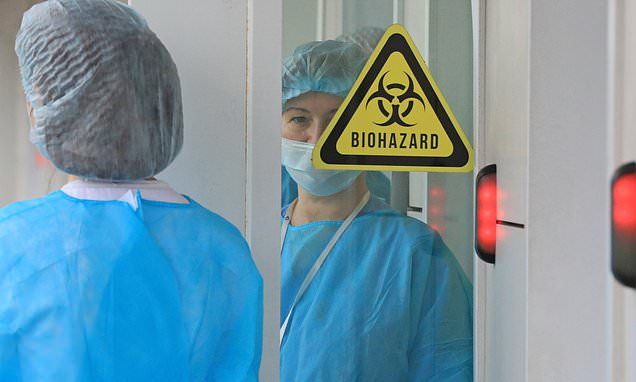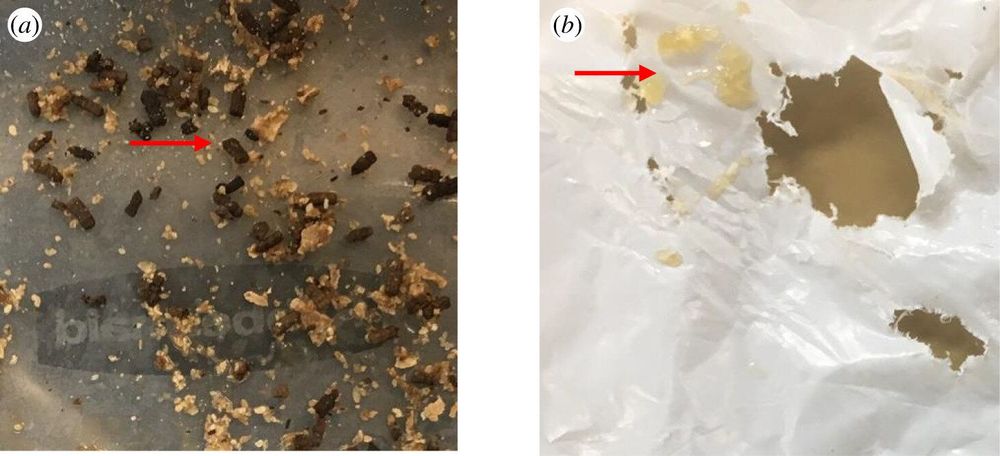Viruses and mobile genetic elements are molecular parasites or symbionts that coevolve with nearly all forms of cellular life. The route of virus replication and protein expression is determined by the viral genome type. Comparison of these routes led to the classification of viruses into seven “Baltimore classes” (BCs) that define the major features of virus reproduction. However, recent phylogenomic studies identified multiple evolutionary connections among viruses within each of the BCs as well as between different classes. Due to the modular organization of virus genomes, these relationships defy simple representation as lines of descent but rather form complex networks. Phylogenetic analyses of virus hallmark genes combined with analyses of gene-sharing networks show that replication modules of five BCs (three classes of RNA viruses and two classes of reverse-transcribing viruses) evolved from a common ancestor that encoded an RNA-directed RNA polymerase or a reverse transcriptase. Bona fide viruses evolved from this ancestor on multiple, independent occasions via the recruitment of distinct cellular proteins as capsid subunits and other structural components of virions. The single-stranded DNA (ssDNA) viruses are a polyphyletic class, with different groups evolving by recombination between rolling-circle-replicating plasmids, which contributed the replication protein, and positive-sense RNA viruses, which contributed the capsid protein. The double-stranded DNA (dsDNA) viruses are distributed among several large monophyletic groups and arose via the combination of distinct structural modules with equally diverse replication modules. Phylogenomic analyses reveal the finer structure of evolutionary connections among RNA viruses and reverse-transcribing viruses, ssDNA viruses, and large subsets of dsDNA viruses. Taken together, these analyses allow us to outline the global organization of the virus world. Here, we describe the key aspects of this organization and propose a comprehensive hierarchical taxonomy of viruses.
A spontaneous hole in the fabric of reality could theoretically end the universe, but don’t worry: physicists are studying the idea for what it can teach us about the cosmos.
Met Basilisk zelfherstellende reparatiemortel herstelt u op eenvoudige wijze scheuren en verhelpt u lekkages in betonnen constructies. Traditionele reparatiemethoden moeten door het werken van de betonconstructie vaak na verloop van tijd worden herhaald. Door de zelfherstellende eigenschappen is dit bij Basilisk zelfherstellende reparatiemortel niet het geval: één reparatie volstaat. Ook als de constructie in de toekomst gaat werken.
Gebruik Basilisk zelfherstellende reparatiemortel voor:
Circa 2018
One promising candidate is eco-friendly and poses no known risks to human health.
Posthuman Daily has a new format — https://paper.li/e-1437691924
A fancy futuristic word like transhumanism has become a daily reality and technology has already expanded our limitations. Here you will find JD’s thoughts about the future of humanity.
If shit ever hits the fan it is good to have a personal library downloaded on your phone. Because your phone be worthless but a digital library will not be.
If you are trying to find prepper and survival books, you’ve come to the right place. Below is a list of 667 of the best survival manuals, books, and survival guide PDF downloads. To download any of these titles, simply right-click on a file, and then select “Save As”.
Feature image ‘Psychonaut’ courtesy of Tetramode.
Follow the Daily Grail on Facebook and on Twitter.
The last half century has seen humanity take its first, tentative steps into outer space. Initially, through American and Russian astronaut missions into Earth orbit and then to the Moon, though more recently robotic probes have ventured beyond our solar system entirely.
Doctors in Oregon delivered the gene editing machinery behind the retina in hopes of treating an inherited form of blindness, according to the companies that developed the therapy.
Researchers in Beijing and Shanghai found the more aggressive strain appeared to have evolved from the other but has become less common since early January, with the older version returning.
A team of researchers at Brandon University has found that greater wax moth caterpillar larvae are “plastivores” that are able to consume and metabolize polyethylene. In their paper published in Proceedings of the Royal Society B, the group describes their study of the caterpillars and what they learned about them and their gut microbiome.
Prior research has shown that plastics are becoming a major pollutant. In addition to piling up in landfills, they are also broken down into microplastics, which are polluting the world’s oceans. And while there have been some attempts to curb their use, they are still produced and used in abundance in many parts of the world. Thus, scientists have been searching for a way to force such materials to degrade faster—natural degradation takes approximately 100 years. In this new effort, the researchers studied wax moths and their larvae, which are known to invade beehives to eat the honeycombs inside.
The researchers with this new effort had learned of anecdotal evidence that the larvae, which exist as caterpillars, eat low-density polyethylene. To find out if this was true, they obtained multiple caterpillars and fed them a diet of plastic grocery bags. They found that 60 of the caterpillars were able to consume approximately 30 square centimeters of the plastic in a week. They also found that the caterpillars could survive for a week eating nothing but the plastic. The researchers also studied the gut microbiomes of several of the caterpillars and identified bacteria that were involved in digesting plastic. They also allowed some of the bacteria to feast on plastic outside of the caterpillar gut and found that some of them were able to survive for up to a year eating nothing but plastic.
